Outdoor Commemoration in Chambersburg’s “Diamond,” 1876-1920
In the “Diamond,” Chambersburg’s central street-intersection, area residents debated, installed, and periodically revised outdoor commemoration of the Civil War. This section presents photographs of that commemoration’s physical products—monuments, plaques, and other devices—still standing in the Diamond today.
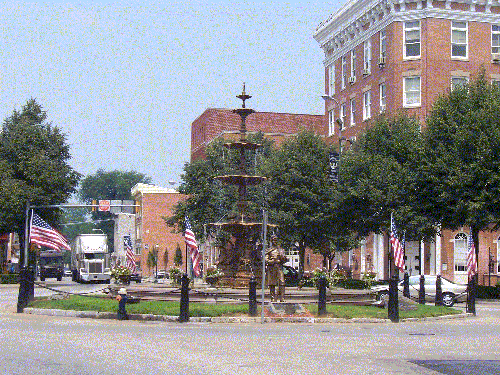
In the “Diamond,” Chambersburg’s central intersection, area residents debated, installed, and periodically revised outdoor commemoration of the Civil War.
Viewed from above, as on a map, the Diamond’s fringe of buildings possessed multiple corners that tapered diamond-like towards the points where each of four streets entered. This prominent open space attracted commemoration not only as a physical center of community but also as a historic site. The Diamond had hosted the troops of both sides during the war, and many of the fringing buildings had fallen victim to the Confederate burning of July 1864.
Area residents proposed the Diamond as a site of permanent Civil War commemoration as early as 1876, when some of the town’s “most energetic business men,” in the words of the Chambersburg Public Opinion newspaper, advocated building a fountain in the Diamond as a memorial to Franklin County soldiers who died during the war. Later that year, another area resident urged capping the fountain with a pair of soldiers representing the reunited North and South and “holding a canteen between them.” The proposal’s advocate, probably local resident Amos Stouffer, cautioned against “a gloomy monument” and publicized his design as evocative of “happy emotions” appropriate to “this year of national rejoicing over our first Centennial.” Yet no monument materialized in 1876.1
The following year, a preexisting Ladies and Soldiers Monumental Association reorganized itself and formally selected the Diamond as its preferred site for public art commemorating soldiers lost in the war. Previous efforts had raised a substantial sum for that purpose, but the rejuvenated group’s progress towards converting the money to an actual structure on the Diamond languished when members divided over the definition of “monument.” Whereas “energetic business men” had endorsed a fountain in 1876, that type of commemoration was advocated in 1877 mainly by a women’s committee within the Association. A soldiers’ committee favored statuary, instead, and the Association remained split along lines of gender and military-service status. Finally, in 1878, the group agreed to a compromise arrangement in which a life-sized statue of a Union soldier would stand beside a six-tiered fountain and surrounding basin.2
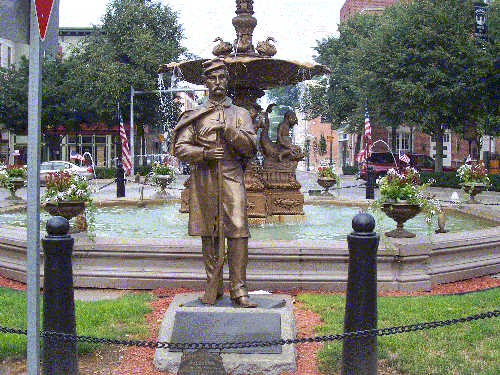
Erected and dedicated later in 1878, the memorial embodied interpretive shifts as well as a compromise between women and veterans. The association’s choice of a statue portraying a single, Union soldier signaled rejection of concepts, like that associated with Amos Stouffer, that emphasized North-South reconciliation. The face of the statue, moreover, gazed south towards “that section of our country our soldiers fought to reclaim,” as the Public Opinion noted approvingly. The newspaper also opined that the memorial commemorated victory on the battlefield as well as victory in the war by serving as a landmark along the route of “Lee’s rebel horde” en route to its “disastrous overthrow at Gettysburg.”3
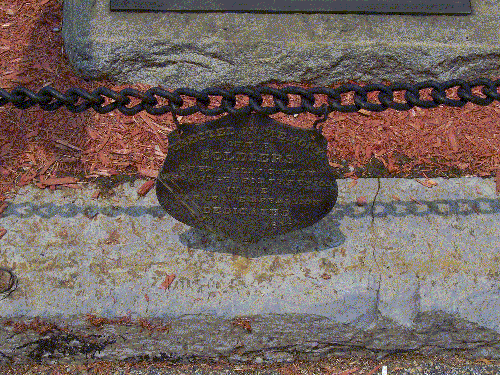
During the years following the memorial’s dedication, and extending into the early-twentieth century, local residents acknowledged the war with additional commemorative devices in the Diamond. In 1883, they added actual cannon to the memorial enclosure, already enclosed within a fence supported by imitation cannon. Although Confederates had faced virtually no armed opposition in their three occupations of Chambersburg, the stalwart bronze soldier and multiple cannon now implied a comforting historical fiction of determined resistance to invaders. (Town managers would remove the cannon around 1930.)4
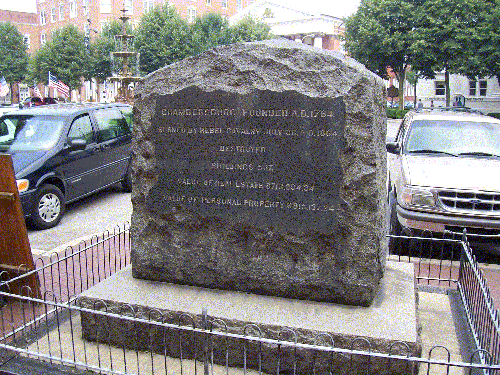
A mammoth gravestone-shaped monument appeared on one side of the Diamond by 1921 to commemorate the conflagration of 1864 and to offer precise statistics on the town’s vast losses in real estate and personal property during the fire.5
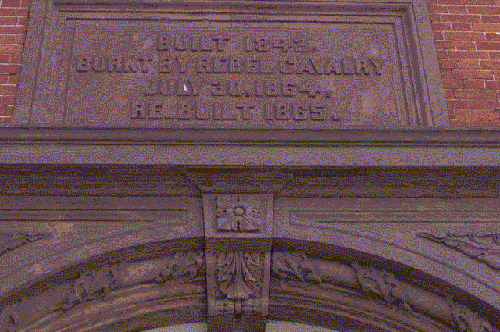
The directors of the Bank of Chambersburg added a plaque to their building’s front facade, facing the Diamond, to mark the Confederates’ destruction of its predecessor building in 1864.
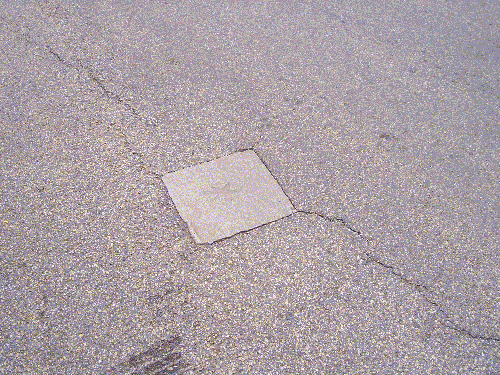
Eventually shifting back towards the reconciliationist posture initially rejected during planning for the memorial—an approach that recognized Confederate Civil War activity but avoided condemnation or gloating over Confederate defeat—Chambersburg residents installed a bronze star in the Diamond’s street surface. The star marked the site of a conference between Confederate generals Robert E. Lee and A.P. Hill prior to the battle of Gettysburg in 1863.6